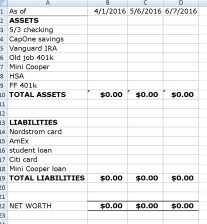How to Write a Winning Resume
October 26, 2016Landing an interview for your dream job (or just your next job) can take a combination of several factors: skills and qualifications, networking, timing and sometimes just plain old good luck. But no matter how you found the job opening, if your resume isn’t up to par, you could lose the opportunity before you have a chance to speak with your potential employer. Even if you’re perfectly happy in your current role and have no reason to believe you’d leave in the foreseeable future, it’s a good idea to keep your resume up to date. If nothing else, it’s a good place to track the accomplishments you’re most proud of! Here are some tips for making the most of yourself on paper, both from my own personal experience in helping with hiring in various roles as well as from various experts in the career and hiring field:
Make it easy to read. A hiring manager or recruiter should have no trouble giving your resume a quick skim to glean the important information. If there’s too much text, there’s a chance your resume could end up in the recycle bin without a second glance. Save the nitty gritty details for your interview and avoid long paragraphs of text with no bullets.
Write a custom, personal cover letter. At Financial Finesse, this can be the differentiator in whether our hiring managers even look at your resume. Use your cover letter to explain why you are excited about the job and highlight anything that would make you the most qualified for the role over someone else with similar experience. Your resume may be a bit dry and clinical, as it should be, so your cover letter is where you can let your personality shine through.
When I applied for my role at Financial Finesse, my cover letter started out, “I am enthusiastically submitting my resume for what I’ve bookmarked as my Dream Job and am so excited to learn more about this opportunity.” It wasn’t hyperbole, that was the truth. And it got me in the door.
Emphasize success, but don’t exaggerate or lie. If you note that you tripled sales in your first year on your current job and it’s the truth, be sure to say that! But also be prepared to give specifics. If you went from $1,000 to $3,000 in sales, there better be a good story behind why that is noteworthy.
Choose a type that fits your career best. Most first resumes are chronological. They list your education and work experience in chronological order. But as you gain more experience and start to move into more strategic roles, you may need to shift your resume to be more functional, where you focus on functions of a job you’ve performed, with the actual jobs and education listed later, or you may want to target your resume for each role you’re applying for.
Before I was at Financial Finesse, I was the Director of Marketing for a small CPA firm. On the surface, that isn’t exactly the type of position that would transition well into a financial planning role, so I targeted my Financial Finesse resume to focus on my prior planning experience, as well as the things I did while in my marketing role that would complement my qualifications to join Financial Finesse. It’s one of the reasons I lead our social media efforts and am on the blog team!
Use key words. This is particularly important if you are submitting your resume online for a published job opening. Many companies use software that scans resume for certain words to help the hiring managers sort which to even look at. Make sure yours includes many of the same words that are used in the job description.
Keep it focused on the value you can add. View everything you put on your resume through what I call the WIIFT lens – what’s in it for them. That means avoiding statements that start with ‘I,’ focusing on how your experience can add value rather than just listing duties and tasks you performed, leaving out information on what you hope to get from the job, deleting irrelevant experience (especially from the distant past), and staying away from flowery language. Everything on your resume should be laser focused on telling the prospective employer what you can do for them.
Proofread, use spell check and proofread again. Nothing turned me off more when reviewing resumes than a typo or grammatical error. Ask a friend or family member to give your resume a thorough read for errors and then proofread it yourself once again. Don’t let a boneheaded oversight ruin your chances for your next job.
Don’t forget that if you hire a resume writing coach for a job search in your current field, you may be able to write off the cost. Your resume should always be a work in progress. If you haven’t updated it lately, let this be a reminder to dig it out of your files and do a little refining in the next week or so.
Did you know you can sign up to receive my blog posts every week, delivered straight to your inbox? Just head over to our blog main page, enter your email address and select which topics or bloggers’ posts you’d like to receive. You may also follow me on Twitter and Facebook as well.

